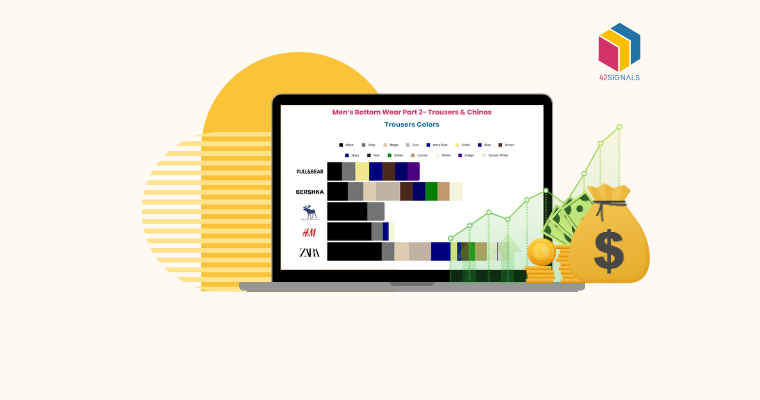Table of Contents
ToggleKeeping track of competitor products can offer businesses a wealth of useful information.
By observing the choices and strategies of others in the same industry, companies can uncover popular color trends, identify which product categories are driving revenue, and analyze sales performance.
With the right tools, such as competitor analysis dashboards, businesses can transform raw data into meaningful insights that inform strategy and decision-making.
Let’s explore how staying informed about competitor activities can provide a clearer picture of the market and help brands stay ahead.
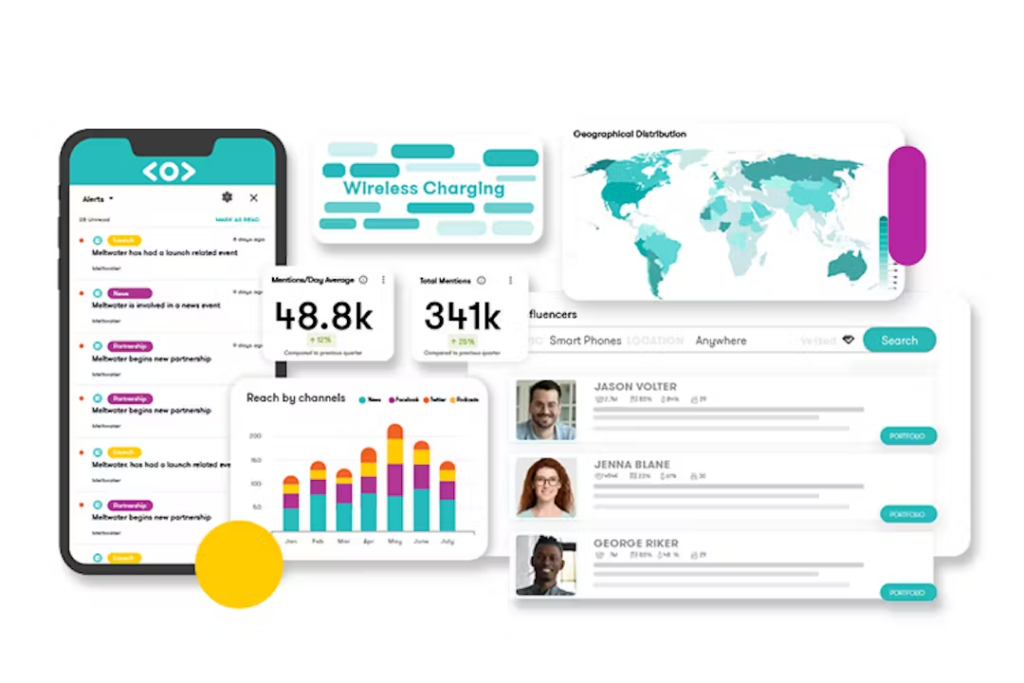
Image Source: Meltwater
Why Keeping an Eye on Competitor Products Matters?
Keeping tabs on competitors involves assessing their strengths, weaknesses, and overall approach to the market. While it was once limited to studying pricing or advertising campaigns, this process has expanded to cover elements like product design, brand presentation, and consumer behavior.
For businesses operating in fast-paced sectors like quick commerce, this is particularly useful.
Observing the design and color choices competitors use, for instance, can reveal emerging trends that attract customer attention.
Beyond aesthetics, these observations help businesses align their strategies with customer preferences and market needs.
Identifying Color Trends Through Competitor Product Analysis
Colors have a powerful influence on how customers perceive and interact with products. They can evoke emotions, signal quality, or even create an instant connection with a brand.

Monitoring the color schemes used by competitors can highlight popular choices and emerging preferences.
Key Areas to Focus On:
- Seasonal Variations: Competitors often refresh their collections with color palettes that align with particular times of the year—light pastels for spring, earthy tones for fall, or festive reds during the holidays. Paying attention to these choices can help your own product offerings feel relevant and timely.
- Industry-Specific Standards: Different industries tend to rely on specific hues to signal trust or expertise. For example, financial services often lean on blues for dependability, while beauty brands might embrace bold, vibrant shades to convey creativity and excitement.
- Local and Cultural Preferences: Businesses with competitors operating in specific regions may find that certain colors resonate better due to cultural influences. Observing these patterns provides insights that can shape localized strategies.
Competitor analysis dashboards are particularly helpful in organizing this information. These tools allow you to track color trends across a competitor’s catalog, analyze shifts over time, and correlate those changes with customer engagement or sales spikes.
Analyzing Revenue Distribution to Improve Business Decisions
Another significant benefit of observing competitor products is the ability to estimate how much revenue certain product lines generate.
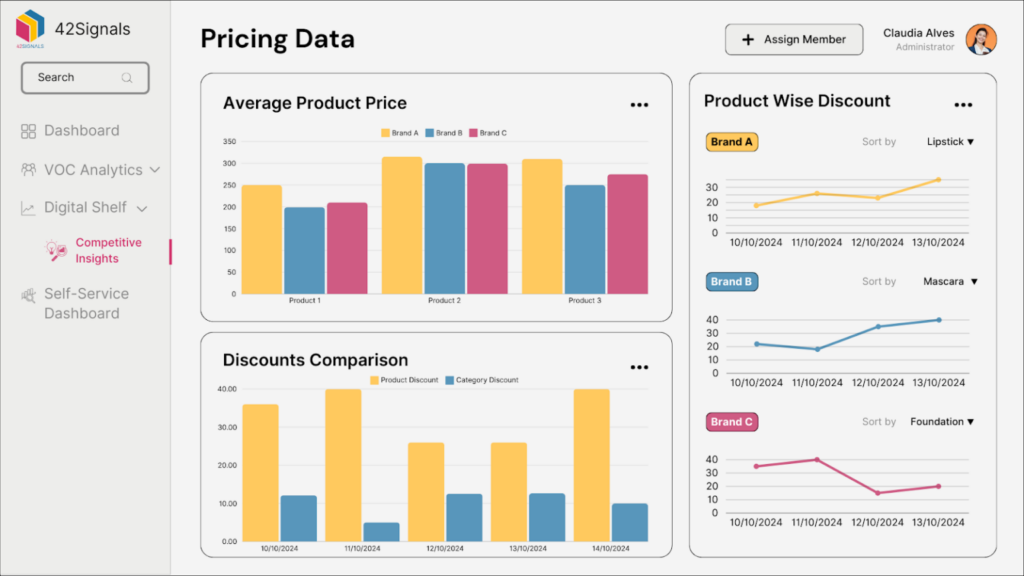
While exact figures aren’t always accessible, careful observation can help businesses estimate which items or categories are pulling in the most money.
Insights Derived from Observing Revenue Streams:
- High-Volume Sellers: Watching for products, through product data and prices, that consistently sell out or receive frequent restocks can indicate high-performing items that contribute significantly to a competitor’s earnings.
- Pricing Techniques: By analyzing how competitors price their products, you can infer whether they prioritize high-volume sales with lower profit margins or target premium pricing strategies.
- Category Focus: Some companies dominate certain segments of the market. For example, if a competitor has a popular athletic shoe line, it suggests significant investment and revenue generation in that area.
This type of information can be especially valuable for businesses operating in the quick commerce space, where demand shifts frequently, and staying relevant requires constant adjustment. By focusing on competitor strengths, you can fine-tune your own product lineup to match market demand.
Leveraging Sales Data to Shape Your Business Strategy
Sales information is the backbone of effective business planning. Watching how competitor products perform allows businesses to compare their own progress and uncover new opportunities for growth.
Valuable Insights Found in Sales Performance:
- Identifying Popular Choices: Whether it’s a specific color, feature, or style, noticing which competitor products sell the best offers a window into customer priorities.
- Understanding Preferences: Tracking patterns such as material choices, functional features, or even packaging details gives businesses a chance to align their offerings with consumer tastes.
- Evaluating Promotional Campaigns: Analyzing competitors’ sales trends during discounts or seasonal promotions can provide clues about what resonates most with customers and how to replicate that success.
With the help of competitor analysis dashboards, businesses can compile sales-related data from various sources. These tools streamline the process, making it easier to generate insights and refine strategies in response.
Measuring Share of Search to Measure Consumer Interest
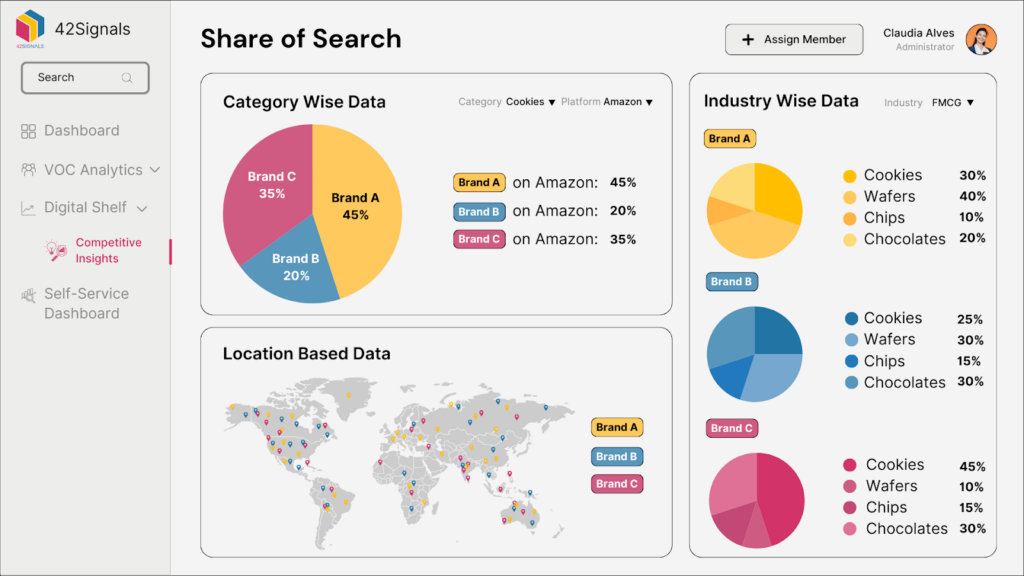
In digital commerce, understanding search trends can reveal how prominently a brand or product is featured in online queries compared to its competitors.
This “share of search” metric can help businesses gauge customer interest, identify rising stars in the market, and ensure their offerings remain visible.
How Share of Search Helps Inform Product Strategy:
- Keyword Patterns: Studying keywords associated with competitor products highlights which categories or features are attracting attention online.
- Assessing Consumer Demand: A product that dominates search interest likely reflects high customer enthusiasm. Understanding this trend helps businesses focus their efforts on areas that matter.
- Comparing Visibility: Measuring how your brand’s online presence compares to competitors provides a clear picture of whether additional marketing or SEO efforts are needed to boost your reach.
Regularly incorporating this metric into your analysis ensures your strategy stays aligned with current market conditions.
Best Practices for Monitoring Competitor Products in Real-Time
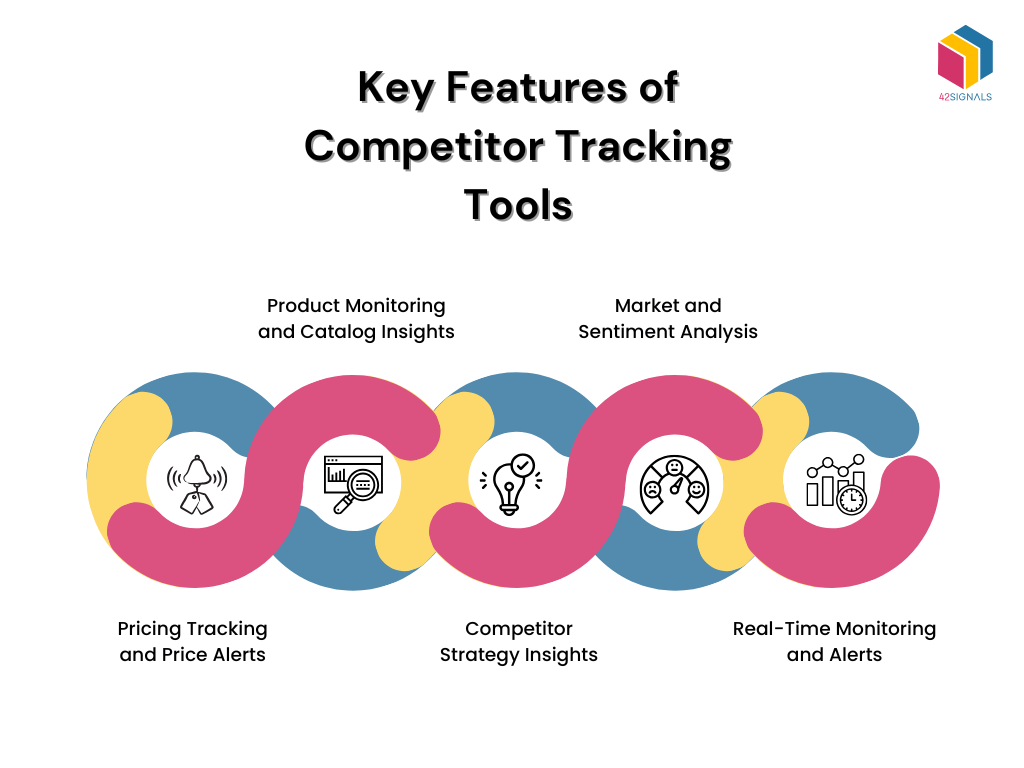
To make the most of competitor insights, businesses should follow a structured and intentional approach. Here are a few tips:
1. Leverage Technology
A competitor analysis dashboard simplifies the process of gathering and interpreting data, offering a clear overview of sales trends, product categories, and color usage.
2. Define Clear Goals
Decide on what you aim to learn from competitors, whether it’s identifying trending color palettes, examining successful promotional tactics, or benchmarking pricing strategies.
3. Update Regularly
Competitor tracking is not a one-and-done task. Regularly revisiting competitor data ensures you stay informed about the latest trends.
4. Combine Sources
Pull data from a variety of platforms, including social media, e-commerce sites, and independent reviews, to form a comprehensive view of competitor activity.
5. Act on What You Learn
Insights only have value when they lead to meaningful changes. Use competitor observations to refine your marketing, product design, or operational strategy.
Conclusion
Monitoring competitor products offers a unique perspective on customer preferences and market movements. Staying tuned to trends in color usage, tracking share of revenue, and analyzing sales data helps to make informed decisions.
42Signals provides access to these data points and allows businesses to monitor and learn about competitor strategies which can be instrumental in driving growth.
Schedule a demo to find out more.
